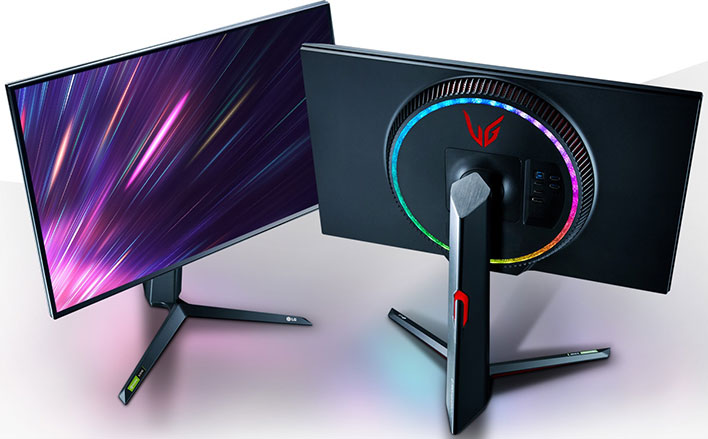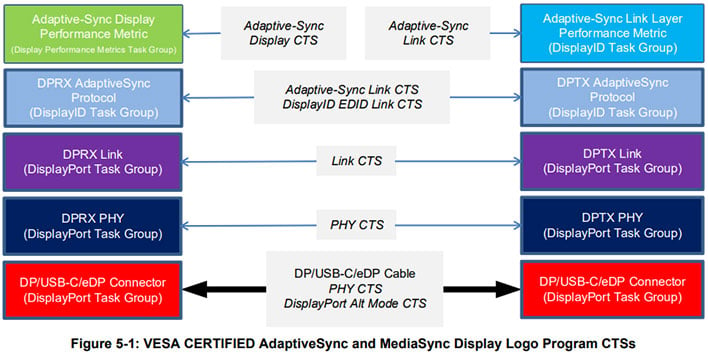VESA Adaptive Sync VRR Gaming Monitor Cert Focuses On Flicker And Real Response Time

Gaming monitors have come a long way since the days of CRT, and even early LCD models. In the old days, the main specifications that mattered were the physical size and native resolution. As display technology evolved, however, other factors have come into play. One of those is adaptive sync, and to help make sense of it all, VESA has announced the first publicly open standard for variable refresh rate (VRR) performance on PC monitors and laptop displays.
The VESA Adaptive-Sync Display Compliance Test Specification, as it's called, consists of more than 50 test criteria with an automated testing methodology and defined performance mandates. There are two performance tiers—AdaptiveSync Display (gaming) and MediaSync Display (streaming)—and monitors that pass VESA's testing will earn a certification badge, similar to VESA's DisplayHDR program.
You may also see a set of numbers attached to the former badge. For example, AdaptiveSync Display 144 or 240. This denotes the maximum native refresh rate a monitor supports. The range for a certified AdaptiveSync Display monitor or laptop panel is 60Hz to 144Hz or higher, while the MediaSync Display range is 48Hz to 60Hz or higher.

Complete set of VESA Certified AdaptiveSync and MediaSync Display logo program compliance test specifications (CTSs) for both Sink and Source devices (Source: VESA)
Variable refresh rate support has largely been associated with NVIDIA's G-Sync and AMD's FreeSync technologies. VESA, however, included native adaptive sync support in the DisplayPort 1.2a protocol back in 2014, and is supported by AMD, NVIDIA, and Intel.
G-Sync and FreeSync aren't going anywhere, but VESA is hoping that its certification program will make it easier for buyers to sift through a sea of monitors and laptops for quality models. VESA acknowledges that GPU vendors have their own proprietary standards, but contends that the bulk of their testing is a mystery. In contrast, VESA's testing is an open standard with viewable performance criteria. There's also a more detailed breakdown (PDF), for those who want to really get into the weeds.
There are some limitations with the program. For one, VESA is only looking at DisplayPort, because that's where its adaptive sync protocol exists. So this won't do anything to bring clarity to HDMI 2.1 displays. And secondly, it remains to be seen how many monitor models display makers will pay to have tested—at present there are just two certified models, both from LG (27GP850 and 27GP950).
That said, there's more to these certifications than qualifying an acceptable level of flicker. Personally, I'm more intrigued about the response time criteria. VESA requires 5ms or less for its AdaptiveSync Display certification, and while that sounds high, it's based on 20 tests. In theory, a monitor that touts a 1ms GtG response time could fail to meet VESA's criteria, because that 1ms figure could be based on a cherry-picked result rather than an assortment of tests.
In a sense, response times are meaningless right now. That's because there's no real oversight or standard testing model. A 1ms rating might not even be based on a gray-to-gray transition. VESA's testing, if nothing else, would give buyers a way to compare the response time across different monitors in a real and meaningful way.
Like the DispayHDR program, the AdaptiveSync and MediaSync specifications will evolve over time. Also interesting—Wooster says a lot of panels will not pass VESA's testing.

